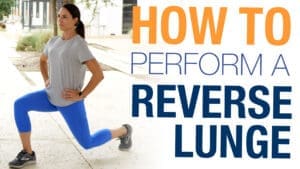You walk into the gym and see someone standing under a bar. Suddenly, they jump up and grab onto the bar, effortlessly pulling themselves up. While watching them perform several more pull-ups, you might think to yourself, “They make this look so easy!” Pull-ups require an extremely high level of fitness. For many people, doing just one pull up is nearly impossible. However, with enough hard work and commitment, anyone can learn to do a pull-up.
Why Pull-Ups Are Difficult
Several upper body muscle groups that are used in pull-ups include the back, arms, shoulders, abdominals, hands, and forearms. Your shoulder muscles are used to hoist the body upwards towards the bar, while the abdominal and back muscles help stabilize the body and generate enough force to swing and propel the body up. Finally, the hands and forearm muscles are used to hold the grip and support your entire body weight on the bar. Your biceps, triceps, and arm muscles located near the elbow are all heavily engaged to keep your body and head up. It is critical that all these muscle groups work in sync to perform a proper pull up and avoid an injury.
Proper Pull-Up Form
- Start by standing directly under the bar. Reach up and grab the bar, keeping your grip slightly wider than shoulder width, palms facing away from you.
- Begin pulling your body upward. Keep pulling until your chin is just above the bar.
- Hold the position for a second, then slowly lower yourself back down.
- When lifting yourself up, concentrate on engaging your back and bicep.
If you’re new to pull-ups, don’t jump up to grab the bar or swing on the bar. Doing so may cause a strain or muscle tear, or other soft tissue injuries that can derail your progress.
Once you can do one pull up, take a break for a minute or two and then do another. Try limiting your pull up exercises to only a few times a week. Eventually, you’ll work up the strength to do more pull-ups in a row. Remember to record how many reps and sets you do so you can track your progress. You might only be able to do one set of one for a while. However, after a few weeks of practice, you might be able to do three sets of three reps.
Exercises For Better Pull Ups
If you’re just starting out, you’ll want to build up some solid upper body strength before attempting a pull-up. Try doing shoulder and wrist strengthening exercises that can provide a good baseline for those who are new to strength conditioning.
***Disclaimer: Always consult with your doctor before starting any exercise program. If you experience any numbness, tingling or reproduction of your symptoms, please contact your doctor. Stop the exercise immediately if you experience any pain, tingling, or difficulties performing this exercise*
Rows
- Tie an elastic band around a stable object or have a workout buddy hold the center of the band for you.
- taking each end of the elastic band, stand tall with abs tight and hold the ends in front of you with elbows bent next to your sides at a 90-degree angle.
- Pull the handles back until they are next to your side and elbows behind you.
- Slowly release.
- Complete 3 sets of 10 repetitions.
Wrist Flexion Exercise With Band


- Place a band under your foot or another heavy object.
- Hold the band in your hand with your palm facing up and place your forearm on a table with the hand off the edge of the table.
- Flex the wrist upward without moving the forearm.
- How many reps
- Return to the starting position.
Relieve Elbow & Arm Pain
It’s normal to feel some discomfort in your forearms, elbows, and shoulders while getting used to pull-ups. Below are some stretches you can do to relieve any mild tension and discomfort.
Is Pain Keeping You From The Perfect Pull Up?
If aches and pains have been keeping you from achieving your fitness goals, or if you experience an injury due to a new fitness program, contact Airrosti. Our providers are expertly trained to properly assess and pinpoint the root cause of your pain. In an average of 3.2 visits, based on patient-reported outcomes, we can help you get back to doing pull-ups and other exercises pain-free. Schedule an appointment with us today!
Read our Medical Disclaimer here.










